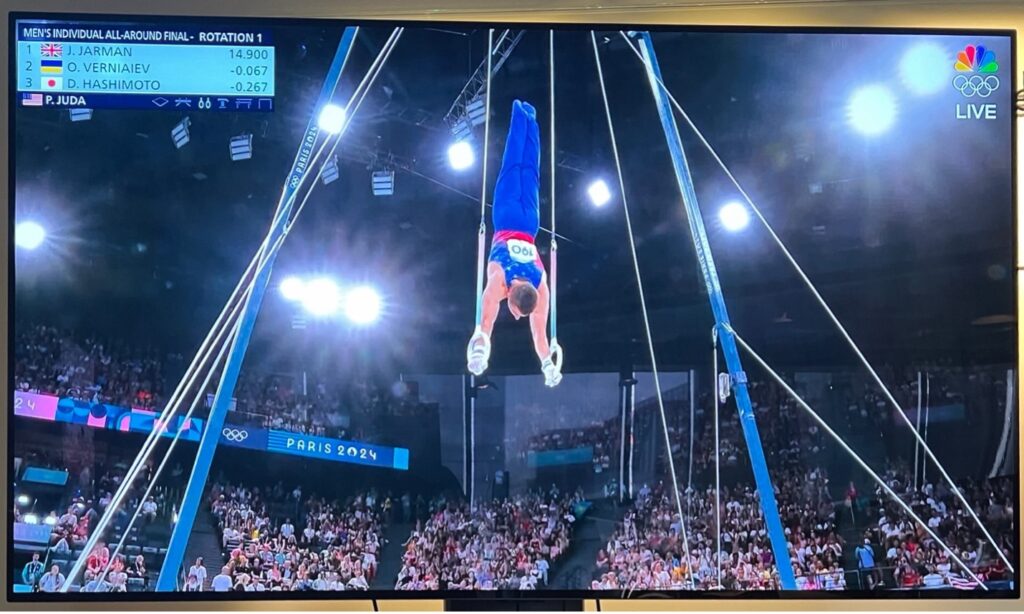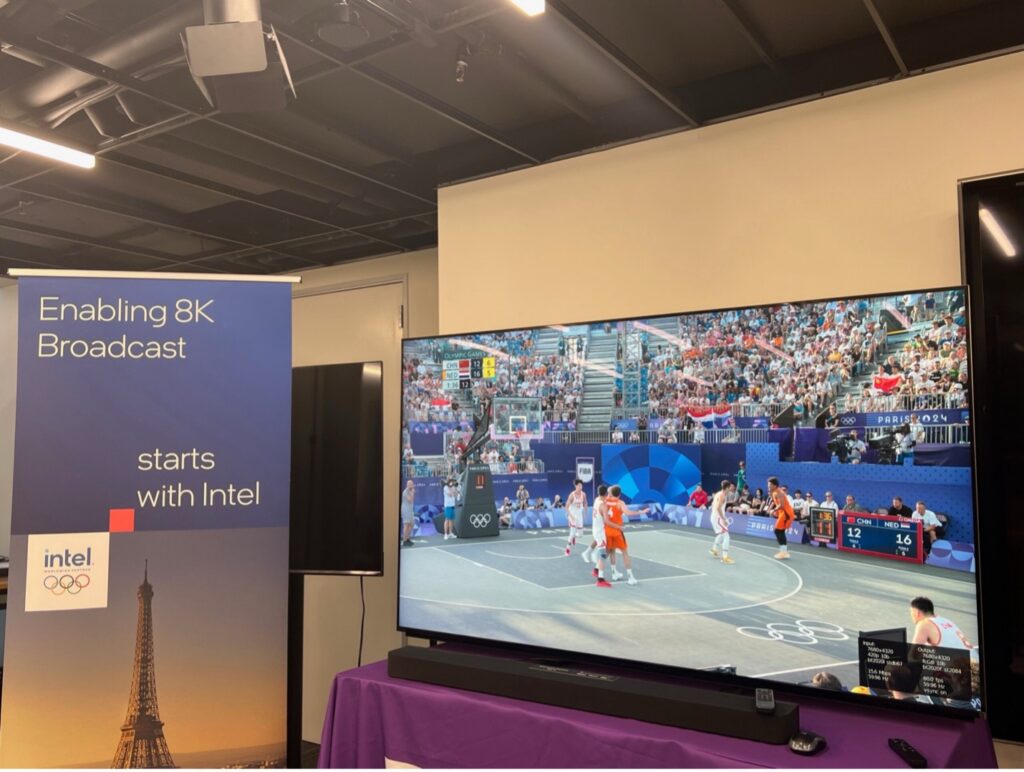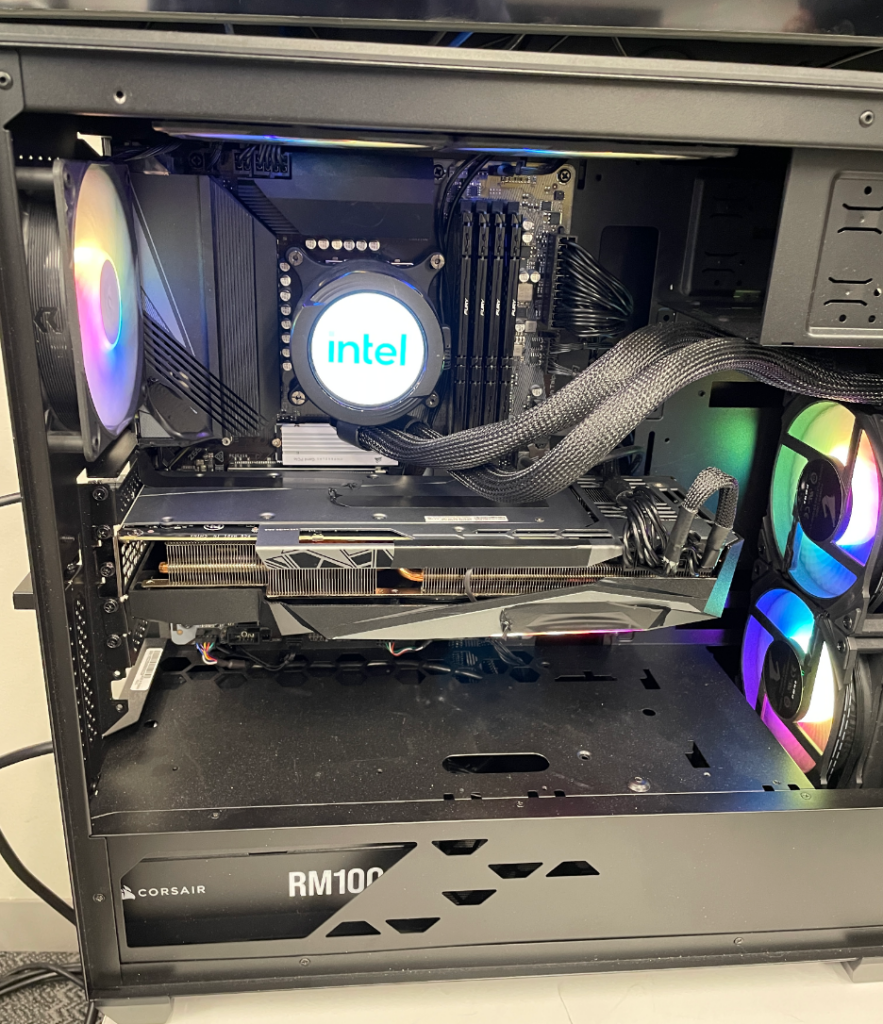By Sam Matheny, CTO & Executive Vice President at the National Association of Broadcasters.
Capitol Broadcasting Company is a family business, and I worked there for nearly 20 years earlier in my career. I worked for Jim Goodmon, the CEO that Broadcasting & Cable Magazine referred to as “HDTV’s True Believer”, and someone who promoted a leap forward in picture and sound quality that we all enjoy today. He was an instigator, agitator, and investor in the move from analog to digital, including the adoption and deployment of HDTV.
Later, I worked for his son, Jimmy, who once told me, when talking about HDTV and the future of broadcasting, “It would be better if we had something better.”
As a member of the Ultra HD Forum, I continue to advocate for improved images and sound. The summer Olympics from Paris offered us a chance to see something better. Actually, in our lab at NAB we had better in a couple of forms of ultra high definition offerings.
One was a free over-the-air broadcast of ATSC 3.0, delivering 1080P with HDR and NGA. This broadcast was a production of NBCU and was encoded using HEVC. We believe it took about 4-5 Mbps of capacity to deliver and it was a noticeable improvement in picture and audio quality.
Ultra HD Characteristics:
- Spatial Resolution – 1920×1080
- Bit depth – 10 bit
- High Dynamic Range – Dolby Vision
- Frame Rate – 59.94 frames per second
- Next Generation Audio – Dolby Atmos
- While not a component of Ultra HD, NBC also leveraged NEXTGEN TV and offered an interactive application that allowed users to access a variety of on-demand content from the games

56 NBC stations (O&O’s and NBC affiliates) broadcast the Olympics in 1080P/HDR with Dolby Vision and Dolby Atmos Next Generation Audio.
The other was a private demonstration feed of “glass-to-glass” 8K video from select events. “Glass-to-glass” means the video was shot using an 8K camera and was processed as native all the way to an 8K display.
Ultra HD Characteristics:
- Spatial Resolution – 7680 x 4320
- Bit depth – 10 bit
- High Dynamic Range – HDR10
- High Frame Rate – 60 frames per second
- Raw bitrate of approximately 48 Gb/s from the camera

The lab at NAB was one of only two places in the United States to experience Intel’s live 8K feed from the Olympics.
Intel compressed the live raw feeds using Versatile Video Coding (VVC) by about 1000:1 to achieve what was typically a 20 -60 Mb/s livestream. In our lab, we decoded the stream using an Intel® CoreTM i9 processor PC and displayed it on a retail 8K TV set. The results were stunning and were observed by both expert viewers and laypeople. There is more information about Intel’s work at the Olympics here.
With next-generation standards like ATSC 3.0 and improved codecs like VVC, there is an opportunity for mass deployments of ultra high definition at bit rates that make business sense. For comparison purposes, the ATSC 1.0 broadcast was 1080i and was encoded using MPEG-2 at 59.94 frames per second with 5.1 audio. We estimate it took approximately 12-14 Mbps to deliver. So, we certainly have something better!
But there is work to be done, and here are some areas for collaboration and improvement.
- I’d argue the greatest investment needs to be made in the workflows required to produce and distribute the Ultra HD content. We are in a dynamic environment with many formats and technologies that need and deserve integration and support as we continue to migrate to better. The “gozintas” and “gozoutas” all need to be coordinated, and each handoff is an opportunity for failure or improvement. Of key concern is HDR.
- HDR
- HLG vs PQ, or should I say HLG and PQ – flavor management and best practices for production and distribution
- Also, how receivers and displays recognize that HDR is part of the signal and manage it to not create a cascading application of HDR that ultimately makes the picture look worse than the creator’s intent.
- Encoding: VVC needs further development. We used a large personal computer with a GPU-powered graphics card to decode the signal from the Olympics, and we need chip-scale solutions that can be integrated into consumer electronics. Other advanced codecs need further development, as do different program distributors’ use of different codecs. It is worth noting that Brazil’s TV 3.0 Project selected VVC as the codec for their new standard.

The 8K live stream was received and decoded using an Intel® CoreTM i9 processor PC and displayed on a retail 8K TV set.
- High frame rate
- Temporal resolution is an area that could really yield improvement in experience. 60 FPS is table stakes today, but 120 FPS is desirable for certain types of content, such as sports.
- While virtually every broadcast video camera can capture 120 FPS for slow motion outputs, very few actually output that frame rate making it an expensive endeavor to pursue.
- The Television Operating System (TVOS) landscape must support all the Ultra HD elements. This can be complicated, given the amount of testing and certification required.
- ATSC 3.0 needs further deployment. In the United States, NBC broadcast the Olympics in ultra high definition with HDR in 56 markets. Beyond the Olympics, nearly 190 channels in different markets reach about 73 million U.S. households with ATSC 3.0 signals that include HDR. We need to get to 100%. Brazil is also adopting many elements of ATSC 3.0 and this should further boost penetration.
- Cable still accounts for approximately 50% of viewing in the United States, and cable plants need to be upgraded to support advanced codecs. The same is true for streaming solutions, especially as more viewers engage this way.
- More Ultra HD capable sets need to be sold. Here are some forecasts for the United States from CTA:
- 4K displays – forecast to remain at roughly 85% of sets sold from 2024 – 2028
- 8K displays – forecast to grow from 1% in 2024 to 8% of sets sold in 2028
- NEXTGEN TV – forecast to grow from 13% in 2024 to 85% of sets sold in 2028
We’d love your perspective on this; if you’re coming to IBC 24, drop by booth 3.B21 for a chat.
